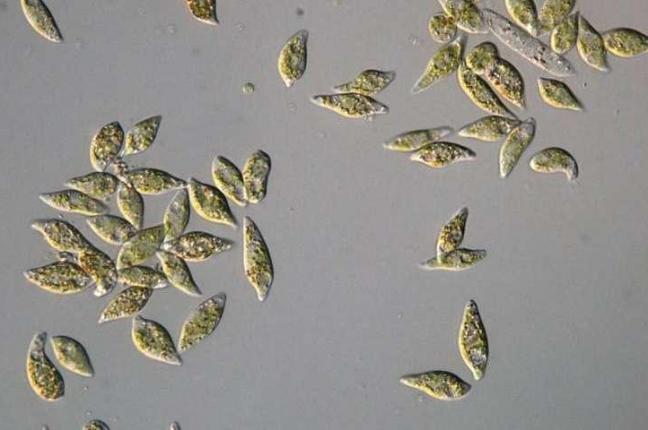NORWICH, England, Aug. 14 (UPI) — Researchers have sequenced a species of pond algae (Euglena gracilis) with a plethora of new, unclassified genes — genes with the potential to create a variety of carbohydrates, proteins and natural products.
Because fully sequencing an organism’s DNA is especially time-consuming work, researchers at the John Innes Center, in England, sequenced the single-celled organism’s transcriptome. The transcriptome analyzes a organism’s RNA molecules to offer a snapshot of the genes that are being actively expressed.
Whereas a organism’s genome is relatively stable, the transcriptome changes as gene expression is altered by environmental variables.
In sequencing the algae’s transcriptome, researchers found a largely unexplored world of genetic material — untapped potential. Some 60 percent of the active genes were brand new to scientists — never before identified.
The genetic world of Euglena is mostly new, and also vast. The algae’s transcriptome located 32,000 active, protein-encoding genes. Human DNA features roughly 21,000.
The sheer size of the aglae’s genetic coding is part of the reason single-celled algae species like Euglena gracilis have been largely ignored by scientists. Sequencing the genes of simpler microorganisms (bacteria, fungi, viruses) is easier, cheaper and takes a lot less time.
But these new genes could make the extra sequencing work well worth it.
“We know there are many products made from Euglena which are already on the market — beauty and nutritional supplements, foods and even fuel for cars — all popular in Japan and the Far East,” geneticist Rob Field explained in a press release.
The work of Field and his colleague Ellis O’Neill was published in the journal Molecular Biosystems this week.
“What we didn’t realize is that there is so much more that Euglena is capable of producing which could give us new treatments, cures and industrial capabilities,” Field added. “We hope this landmark research will encourage other scientists to build on our findings with Euglena, and other algae, to work out exactly what compounds they make and how we can use them.”







